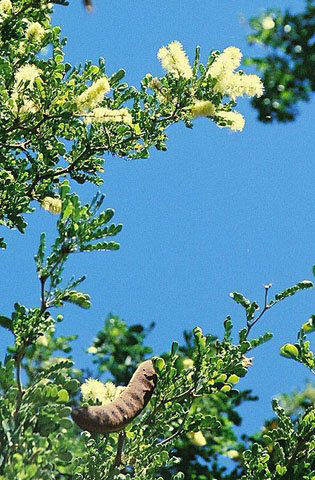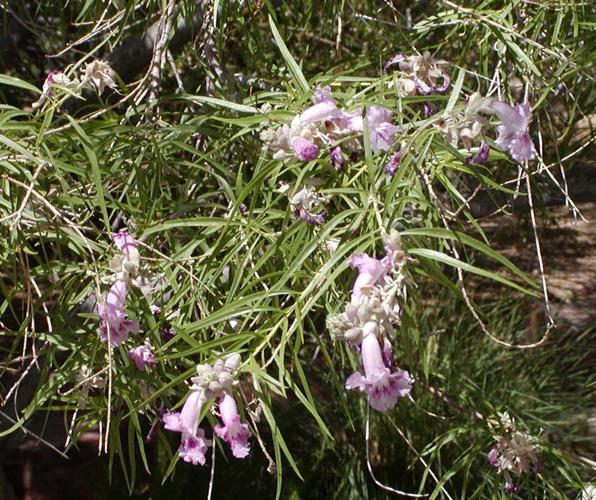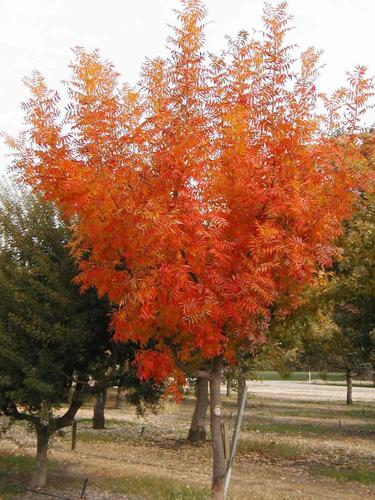Question: Very recently I had my yard people plant a new hybrid mesquite tree in my front yard. I want to water it properly so that the roots go down deeply, making it a more stable tree in monsoon high winds. So, it’s not on my drip irrigation system right now and I’m following his instructions to water it once a week, leaving the hose on a low trickle all night. So far, I’m into the fourth week and watering it some five to six hours each time. They left a “well” around the tree so the water can fill that up and filter slowly down. The wide hole they pounded out had a lot of rock on the sides. My question is — how many months do you suggest I keep watering it this way before putting it on drip irrigation? (Which would be more convenient for me.)
Answer: The mesquite tree can be switched to drip irrigation as soon as you want. The main thing is to keep up the schedule of deep watering once a week until the monsoon season begins. Once the rains begin, you can switch to watering biweekly or not at all during times of regular rainfall. Once the temperatures adjust to something resembling fall, you can reduce your watering even more to once a month until we begin seeing summer temperatures again next year.
Since the mesquite is a desert tree species it can usually survive the winter on regular rainfall alone. I say usually because when we plant them into landscape situations where they are out of their element, there are often extenuating circumstances that might compromise their health such as heat radiating off pavement, compacted soil from activity nearby, and reduced growing area above ground and below. For these reasons, we continue to water these trees as needed and otherwise look out for them. Keeping an eye on them and noting changes in the appearance will help you understand how your tree is doing and allow you to make changes if necessary before things go wrong.
Question: We bought our house two years ago, downtown, and this ash tree (it is an ash, right?) was already here. The west side of the trunk has no bark, and the splitting seems to be getting worse. It also didn’t seem to leaf out as densely this year, despite watering to 3-feet every two weeks or so. I’m wondering if there’s a remedy, or would it be best to cut my losses and start over. If so, what’s your favorite shade tree besides mesquite and ironwood?
Answer: Yes, that’s an ash. Arizona ash (Fraxinus velutina) is a commonly planted landscape tree in these parts. The lack of bark and splitting on the western side of the tree is troubling and telling us that the western sun isn’t well tolerated by this species. Although your photos don’t show the whole tree and surrounding landscape, I will go out on a limb and guess that there aren’t many or any low branches that might shade the trunk from the sun. Because ash trees are susceptible to sunscald, it isn’t recommended to thin ash tree branches unnecessarily. The damage appears severe enough that I recommend planning to replace the tree soon. Sooner if there is a chance the tree might fall on people or property if a monsoon storm should knock it over. There are some nice shade trees you could consider but you should measure the available space before choosing one to make sure the mature size of the tree will fit the space. Other than the species you mentioned, you might consider the Chinese pistache (Pistacia chinensis), Texas ebony (Ebenopsis ebano), or desert willow (Chilopsis linearis), among others.
Question: We are new to Tucson, just celebrated our one-year anniversary, but the two cacti in our backyard are having problems. Both are a bit yellow and it looks like something is eating them. Any ideas or help you can give us on what to do to stop this would be helpful. We have six bird feeders in the yard which has a 6-foot adobe wall completely around it. Javelina or deer cannot get in but birds, lizards and squirrels are all regulars.
Answer: The yellowing may be the result of our hot, dry weather lately. These cacti are tough and will probably recover on their own but you could water them once a month if you are so inclined. The missing pieces are probably the work of rodents/squirrels given your 6-foot wall and lack of other wildlife. Fortunately, these cacti are relatively fast growing and you can probably sacrifice a few pads to your four-legged neighbors. If you lose patience with them, you could put out a few inexpensive snap traps baited with peanut butter. The problem is there are no shortage of squirrels and they will likely keep coming back so it’s probably best to get used to them.
Question: I read your column weekly but can’t recall if I have ever seen this issue. We have a cluster of barrel cacti in our front yard. It seemed like overnight, one of them deflated and looks to be rotting. Do you have any idea what may have caused this and do you think it is contagious and we should remove it?
Answer: Your cacti appear to need water. The dead barrel has a rot but I cannot say for sure from the photo if it is contagious. The lack of water will cause stress to plants and make them more susceptible to insects and diseases. I recommend you dig up the dead one, roots included, in case there is a fungus or bacteria that could spread. Be careful not to damage the other cacti in the process because that is one way that diseases spread from one plant to the next. Once that is completed, you should water the remaining barrels once a month until you receive rain this summer. You could continue this practice of monthly watering during the dry months indefinitely to maintain the health of these plants.






